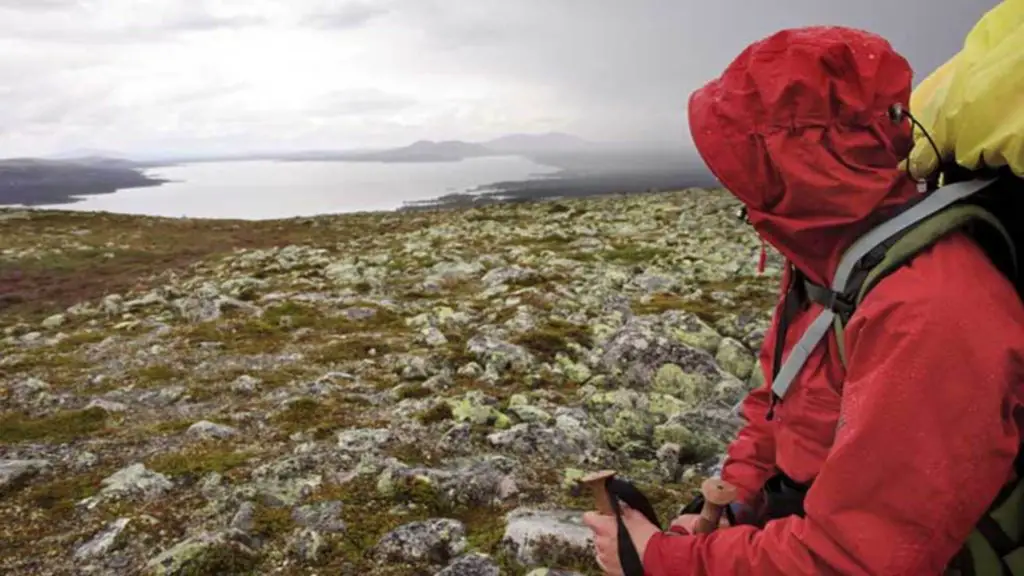Like the soft shell jacket, the hard shell jacket’s job is to keep your base and mid layers dry. But unlike the soft shell, it will do so in the stormiest most violent weather. Snow, wind, and rain are no match for a tough hard shell, and if you often find yourself hiking in winter, ski touring, mountaineering, or live in a cold climate, investing in a quality hard shell jacket is going to be key.
- Waterproof, breathable hard shells utilize a porous waterproof membrane like Gore-Tex or eVent to keep precipitation from coming in while allowing perspiration to get out. It is this membrane, and waterproof tape at the seams, that makes a garment waterproof. The external surface is treated with DWR (durable water repellent), which is what makes rain bead up and snow brush off, never allowing either to soak in and saturate your coat. But DWR only goes so far, like if you stood in the shower long enough, a DWR-only jacket would eventually soak in some water, but with that internal membrane inside, you’d stay dry. Since they can’t make entire jackets out of just the membrane, it gets an external fabric covering and inner lining, adding warmth and durability.
- Waterproof, non-breathable hard shells such as a coated nylon raincoat are great for breaks or very gentle activity but will greenhouse your sweat and turn it against you, soaking your base and mid layer. Do not wear one of these if you will be huffing and puffing in the rain. Do wear one when you are taking it easy in the rain.
A hard shell is for when you need the most protection from heavy precipitation or won’t be exerting as much in lighter precipitation. A soft shell is more breathable but at some point will lose out to harsh conditions. So weigh your activity level/sweat potential against the forecast and decide if you need a bulletproof layer (loud, stiff, thin raincoat, great for inactivity) or something waterproof but still breathable that will allow you to get your cardio on and not get wet, from the inside or the outside. In a cold, dry environment a soft shell is perfect; add water and this is where your hard shell shines.
Keep in mind that if you are hiking in freezing or wet conditions and not wearing insulating layers under a hard shell jacket, the outer fabric is likely to conduct cold to your skin and chill you. And as always, if your base layers aren’t sweat-absorbing and breathable, you’ll overheat and wind up damp.
Fine-tuning your physical thermostat on the go is an artform, and one that will evolve over each hike as the temperature, sunlight, precipitation, and your aerobic output changes, and over the years as you adapt to colder climates or start having menopausal hot flashes. I mean there’s no cut-and-dried “here’s your hiking outfit”—it’s always in flux. Having cornerstone pieces that you can use in different combinations allows you to constantly regulate your body temp, keeping you comfortable throughout your excursion.
Some really great examples of women’s hard shell jackets:
- The North Face Apex
- Patagonia Cloud Ridge
- REI Drypoint GTX
- Arcteryx beta SL Hybrid
- Norrona Trollveggen Gore-tex Light Pro

Wendy Harrington is a California native who has lived in a small town at the foothills of the Cascade Mountains in Washington state since 2001. Her love of trail running and peakbagging has led her to summit all five Washington volcanoes, climb to the high points of three states, and put nearly a thousand miles a year on her boots. Her loves include ridgelines, saddles, granite, one-day pushes on big mountains, anything volcanic, long solo days, and objectives that push limits and test endurance.

